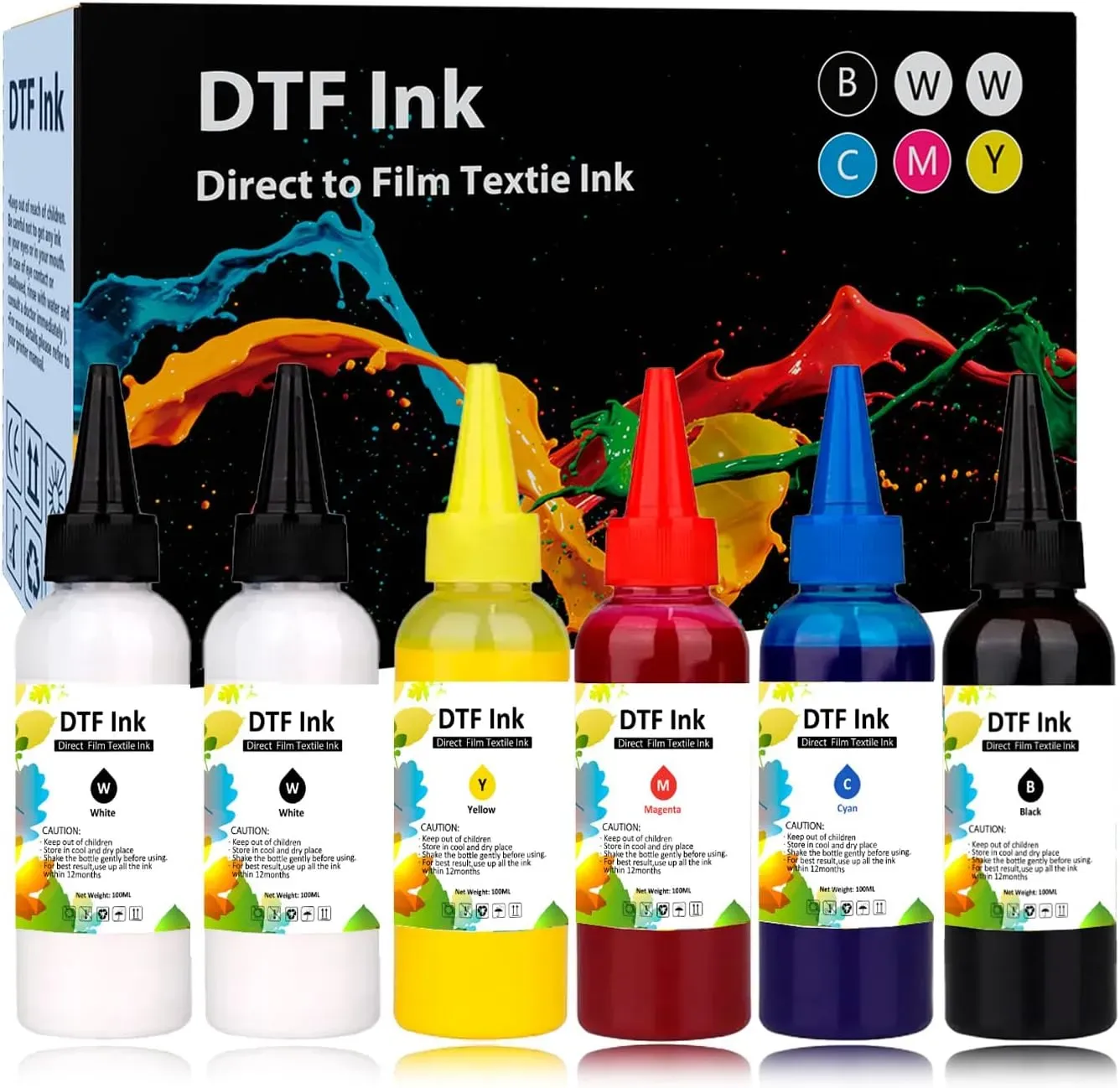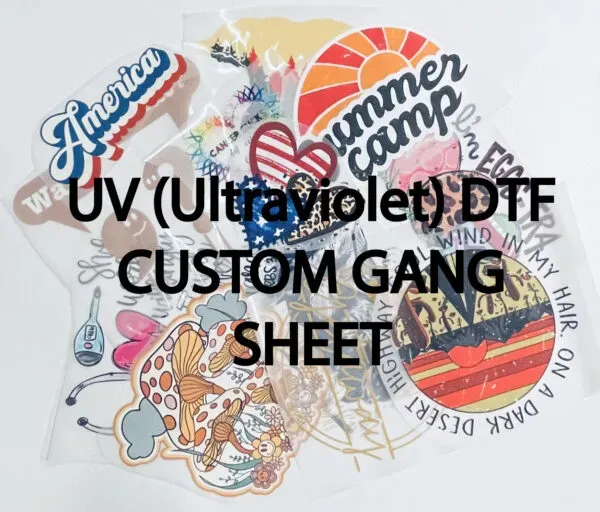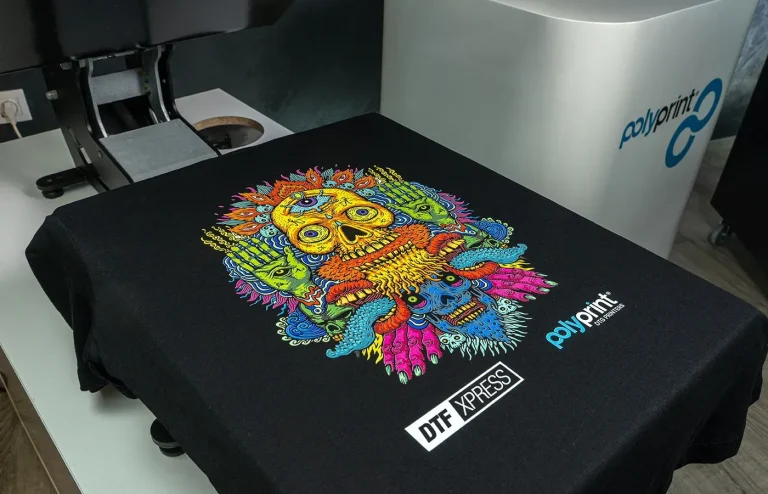
DTF ink, a cornerstone of the Direct-to-Film (DTF) printing process, is essential for achieving breathtaking and high-quality prints on textiles. This innovative printing method allows designs to be applied directly onto various fabrics, revolutionizing the way custom apparel and textiles are created. What sets DTF ink apart is its formulation—primarily using pigment-based inks that offer vibrant colors and excellent durability, making them suitable for both light and dark materials. Selecting the right DTF ink is crucial, as it not only affects the visual appeal of your designs but also ensures longevity and washability of the prints. In this article, we’ll explore the importance of ink selection for DTF, helping you navigate through various options for achieving stunning results in your printing projects.
The realm of Direct-to-Film printing, often referred to as DTF transfers, involves a sophisticated ink selection that significantly influences print quality. These unique garment decoration techniques utilize specialized inks—predominantly pigment-based—to create vivid, durable designs on fabrics. DTF technology is being praised for its remarkable adaptability, allowing for intricate images to be seamlessly transferred onto a wide array of materials, from cotton to polyester blends. As businesses increasingly adopt this innovative printing approach, understanding the nuances of ink types and their properties becomes paramount to achieving optimal results. Explore the dynamic landscape of DTF, where choosing the right pigment can elevate your fabric prints to new heights.
The Advantages of DTF Printing for Custom Apparel
DTF printing has quickly become a game-changing method in custom apparel due to several distinct advantages. One of the primary benefits is its ability to print intricate designs on a variety of fabrics, from cotton to polyester. Unlike traditional printing methods, DTF printing delivers vibrant colors and sharp details without compromising quality. This versatility makes it the preferred choice for businesses looking to produce high-quality prints that enhance brand visibility.
Additionally, DTF printing is known for its cost-effectiveness, particularly for small-run jobs. The lower setup costs associated with DTF enable designers and small businesses to take on projects that may not be feasible with other printing techniques. With the ongoing evolution of DTF technology, it’s evident that this method supports not only high-quality production but also efficient turnaround times, which are crucial for meeting customer demands.
Selecting the Best DTF Ink for Your Projects
Choosing the right DTF ink is crucial in achieving stunning and long-lasting prints. Most successful DTF applications rely on high-quality, pigment-based inks that provide rich color saturation and durability. Pigment inks have the advantage of being resistant to fading, ensuring that your prints stay vibrant after multiple washes—an essential factor for apparel. When selecting ink for your DTF printer, consider the compatibility with your specific fabric choices to ensure the best adherence and performance.
Furthermore, not all DTF inks are created equal, and investment in quality should be a priority for serious businesses. The right ink selection can also greatly influence the washability and feel of the final product, as inks with superior adhesion properties enable prints that resist cracking or peeling over time. Therefore, understanding the features of different inks and how they affect your prints will empower you to make informed choices that elevate your DTF printing experience.
Trends Shaping the Future of DTF Printing
As the landscape of DTF printing evolves, several trends are emerging that are shaping its future and driving innovation within the industry. Notable advancements in DTF technology, including improved large-format printers, are facilitating higher production speeds and enhanced print quality. Companies are continually investing in these technologies to meet the growing demand for personalized and high-quality products, making the market increasingly competitive.
In addition, the customization trend is on the rise, with more businesses looking to leverage DTF printing to create unique offerings that cater to specific consumer needs. This desire for personalized items not only applies to apparel but also extends to home décor and promotional materials. As such, keeping abreast of these trends and adopting relevant strategies can significantly improve your market positioning and responsiveness to consumer preferences.
Understanding the Differences Between DTF and Other Printing Methods
A critical part of navigating the DTF printing space is understanding how it compares to other common printing methods like sublimation and screen printing. DTF printing stands out for its ability to work well on both cotton and polyester fabrics, whereas sublimation prints primarily on polyester and lighter fabrics. This flexibility enables businesses using DTF to broaden their product offerings without restrictive substrate limitations.
Moreover, while screen printing is still a go-to method for large volume runs, it often comes with higher upfront costs and setup times. DTF printing, with its quick turnaround times and lower initial costs, presents an appealing alternative for new and established businesses alike, especially those focused on custom orders or short runs. Such comparative insights are valuable for businesses seeking optimal printing solutions tailored to their specific operational needs.
The Role of Pigment-Based Inks in DTF Success
The choice of ink is undoubtedly one of the most significant considerations in achieving the desired quality in DTF printing, with pigment-based inks taking the spotlight for their superior attributes. These inks are renowned for their excellent color retention and durability, critical factors in ensuring that prints maintain their integrity over time, even under rigorous washing conditions. The ability of pigment inks to produce vibrant colors ensures that designs remain eye-catching and true to their original artwork.
In many cases, the successful application of DTF printing hinges on the ink’s adhesion properties as well. Pigment-based inks are specially formulated to adhere well to a variety of fabrics, ensuring that the final output not only looks good but also withstands the challenges of everyday wear. For businesses aiming to build a reputation for high-quality prints, understanding the crucial role pigment-based inks play in DTF processes is key to sustainable success and customer satisfaction.
Maximizing Print Quality through Ink Selection in DTF Printing
Achieving high-quality prints in DTF printing necessitates careful consideration of ink selection. The right ink can significantly enhance the vibrancy and clarity of designs, directly impacting customer satisfaction and repeat business. Importantly, pigment-based inks are favored for their ability to produce vibrant colors that effectively pop on various fabrics. In choosing inks, it’s essential to ensure they are specifically designed for DTF applications, as this compliance maximizes performance and print longevity.
Moreover, different brands may offer varying formulations of DTF inks, which can lead to different results in print quality. It is beneficial for print businesses to test various brands to determine which inks provide the best results for their specific printers and substrates. Such exploration not only leads to improved print quality but also helps refine the printing process, ultimately positioning businesses for greater success in a growing DTF market.
Frequently Asked Questions
What is DTF ink and why is it important for DTF printing?
DTF ink, or Direct-to-Film ink, is a pigment-based ink specifically designed for DTF printing. It plays a crucial role in achieving high-quality prints, offering vibrant colors and durability. Selecting the right DTF ink ensures that prints maintain their integrity and vibrancy through various washes and conditions.
How does DTF printing compare to other methods using different inks?
DTF printing stands out compared to sublimation and screen printing largely due to its versatility with fabric types. While sublimation works best on polyester and light fabrics, DTF printing allows for use on both light and dark materials. Additionally, the pigment-based inks used in DTF provide better colorfastness than traditional dye inks commonly used in other methods.
What characteristics should I look for in DTF ink for high-quality prints?
When choosing DTF ink, look for pigment-based formulations that ensure longevity, adhesion properties suited for diverse fabrics, and excellent washability. High-quality DTF inks contribute to the vibrancy and durability of the prints, making them essential for maintaining design integrity.
Are there specific brands of DTF ink that are recommended for best results?
While many brands offer DTF ink, it is essential to select those known for high-quality pigment-based inks, such as Eazydtf or reputable suppliers that focus on DTF printing technologies. Researching customer reviews and industry feedback can help determine which DTF ink brand suits your needs best.
Can I use any type of ink for DTF printing, or do I need to choose specifically formulated DTF ink?
It is crucial to use specifically formulated DTF ink for DTF printing. General ink types may not provide the necessary adhesion, vibrancy, or washability required for high-quality prints. Using the right DTF ink ensures optimal print performance across various fabrics.
What are the advantages of using pigment-based inks in DTF printing?
Pigment-based inks in DTF printing offer several advantages, including superior colorfastness, enhanced durability against washing, and better adherence to fabric surfaces. These characteristics make them ideal for producing high-quality, long-lasting prints that maintain their visual appeal over time.
| Key Aspect | Details |
|---|---|
| What is DTF Printing? | A printing method that applies designs directly onto fabrics using special film and heat. |
| Advantages of DTF Printing | 1. Vibrant colors 2. Material compatibility 3. Low setup cost |
| Ink Types and Quality | Choosing high-quality, pigment-based inks ensures durability and vivid colors. |
| Industry Trends | Increasing investments in DTF technology and services, highlighting demand for quality prints. |
| Comparative Insights | DTF versus other methods: Better fabric versatility than sublimation; cost-effective for small runs compared to screen printing. |
Summary
DTF ink is pivotal in achieving exceptional print quality in custom apparel and fabric printing. By selecting the right inks, particularly high-quality pigment-based ones, you not only ensure vibrant and durable designs but also enhance their longevity against wear and washing. The evolution of DTF printing technology emphasizes its growing relevance in the industry, marking a shift towards more efficient and versatile printing solutions. As this sector continues to expand, understanding the nuances of ink selection will enable businesses to meet customer demands and stay competitive in the market. Embracing DTF printing and its high-quality inks can significantly transform your printing projects.





